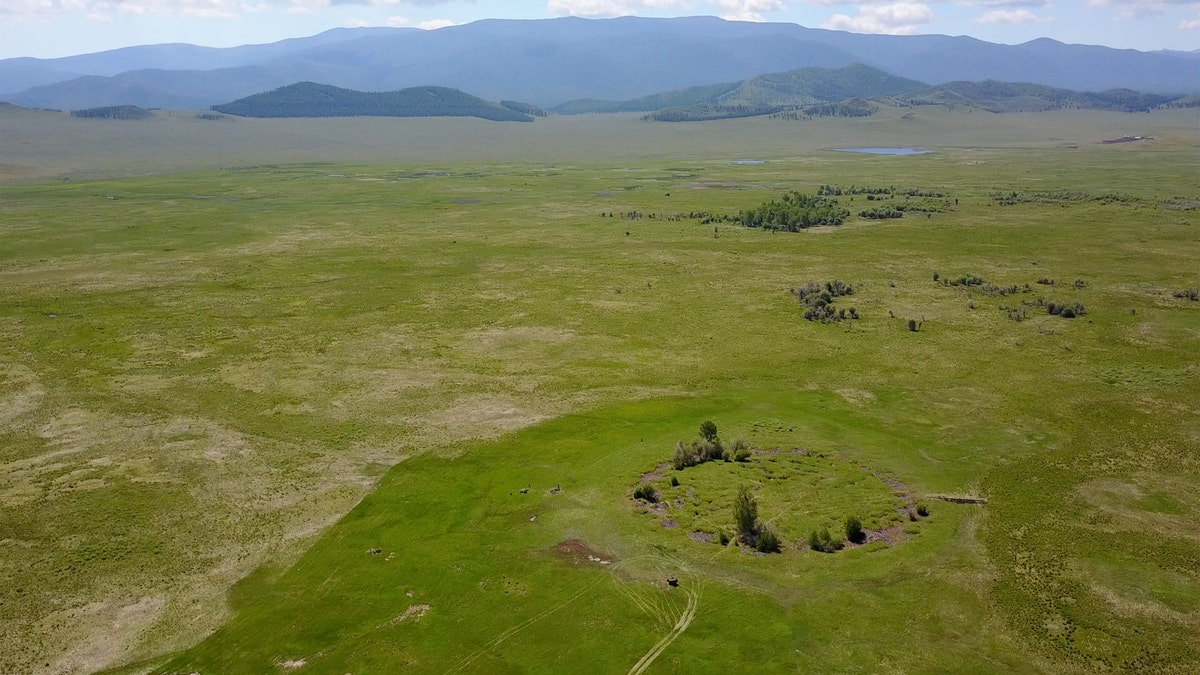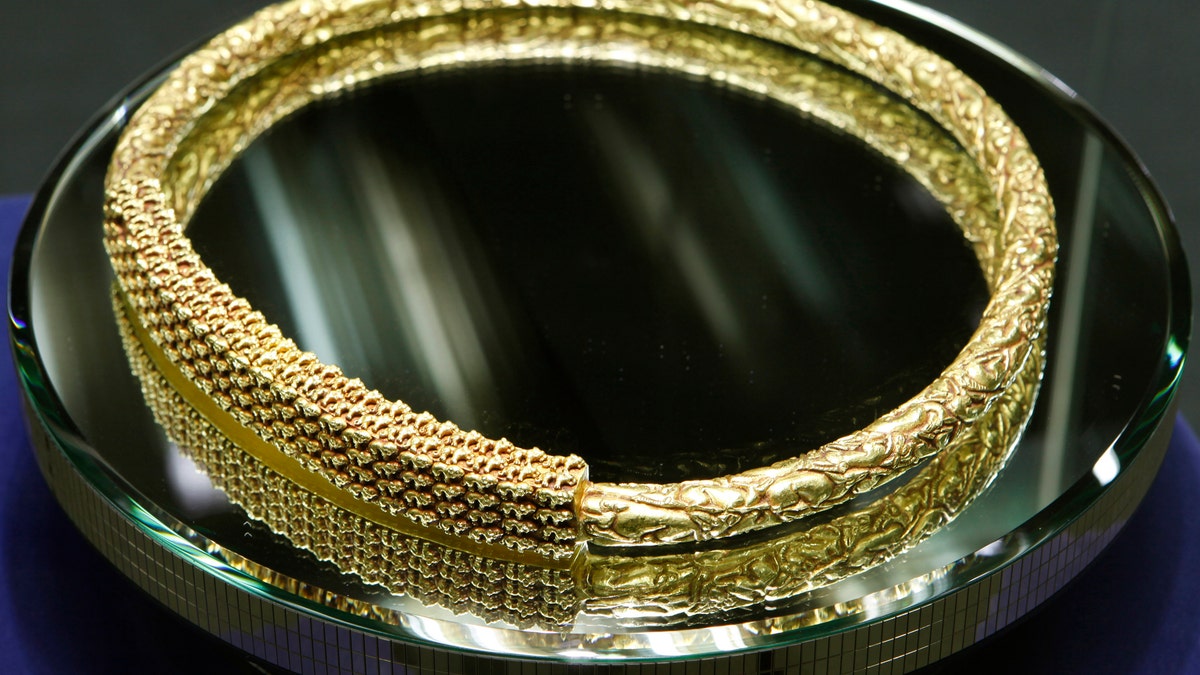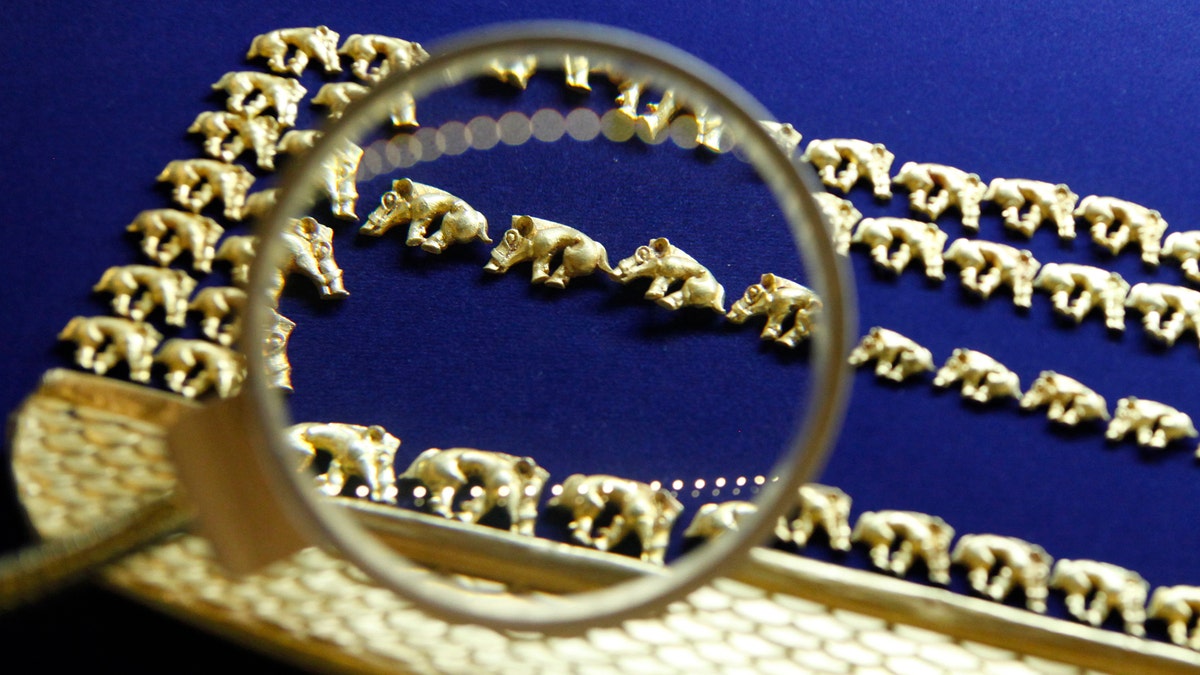
View of the circular burial mound Arzhan 0, also known as Tunnug 1 (Gino Caspari/University of Bern)
Experts have discovered an ancient prince’s tomb in southern Siberia that may contain treasures or even an ice mummy preserved in the region’s frozen soil.
Archaeologist Gino Caspari first noticed the circular structure while studying high-resolution satellite images of the Uyuk River Valley in Siberia. The Bern University scientist suspected that the unusual structure was a burial mound from the ancient Scythian civilization.
The nomadic Scythian civilization stretched from Central Asia across the Eurasian Steppes. The Scythians emerged around the ninth century B.C. and their society lasted until about the 1st century B.C.
Intrigued by the satellite images, Caspari took part in an initial dig at the site last summer with experts from the Russian Academy of Sciences and the Hermitage Museum in St. Petersburg. The team discovered a kurgan, or a Scythian princely tomb.

File photo - a gold necklace excavated from the Scythian burial mound Arzhan 2 is displayed at the national museum in Kyzyl July 20, 2010. (REUTERS/Ilya Naymushin)
The area where the tomb was found is known as the “Scythian Valley of the Kings,” although experts say that the latest discovery is particularly noteworthy. The burial mound dubbed or Arzhan 0, or Tunnug 1, is similar to another kurgan, Arzhan 1, located about 6.2 miles to the northeast.
Arzhan 1, which was built at the turn of the 9th century B.C and the 8th century B.C. was excavated in the 1970s and has long been viewed as the oldest princely tomb in the region. Wooden beams found at the new excavation site, however, date back to the 9th century B.C., making it older than Arzhan 1.
PREHISTORIC 'PARADISE' WITH TROVE OF FLINT AXES DISCOVERED IN ISRAEL
“We have a great opportunity here,” said Caspari, in a statement. “Archaeological methods have become considerably more sophisticated since the 1970s. Today we have completely different ways of examining material to find out more about the transition from the Late Bronze Age to the Iron Age.”

File photo - A gold quiver excavated from the Scythian burial mound Arzhan 2 is displayed at the national museum in Kyzyl July 20, 2010. (REUTERS/Ilya Naymushin)
The expert is also hopeful that Arzhan 0 will eventually reveal its secrets. Positioned in an inaccessible location amid swampy terrain, the tomb is likely to have escaped the attentions of grave robbers. Siberia’s unique environmental conditions also improve the chances of finding preserved artifacts.
Kurgans are typically packed with stones that prevent the sun from thawing out the soil beneath them. This means that ice beneath the stones can prevent the decay of organic matter and sensitive material. “If we’re lucky, we might even find some well-preserved wood carvings or carpets under the stones, or perhaps an ice mummy,” said Caspari, in the statement.
1,000-YEAR-OLD STONE STRUCTURE IN MEXICO MAY DEPICT CREATION OF EARTH
Excavations by a joint German and Russian archaeological team at another Scythian tomb in the region, Arzhan 2, unearthed a host of treasure. The excavations, which ran between 2001 and 2004, revealed over 1,000 gold objects that were placed with two corpses in the tomb’s main burial chamber. A solid gold necklace found at the site, for example, weighs 4.4 pounds. Weapons, pots and the remains of horses with elaborate harnesses were also found.
Caspari’s research in the Russian Republic of Tuva is funded by the Swiss National Science Foundation.
Follow James Rogers on Twitter @jamesjrogers




















